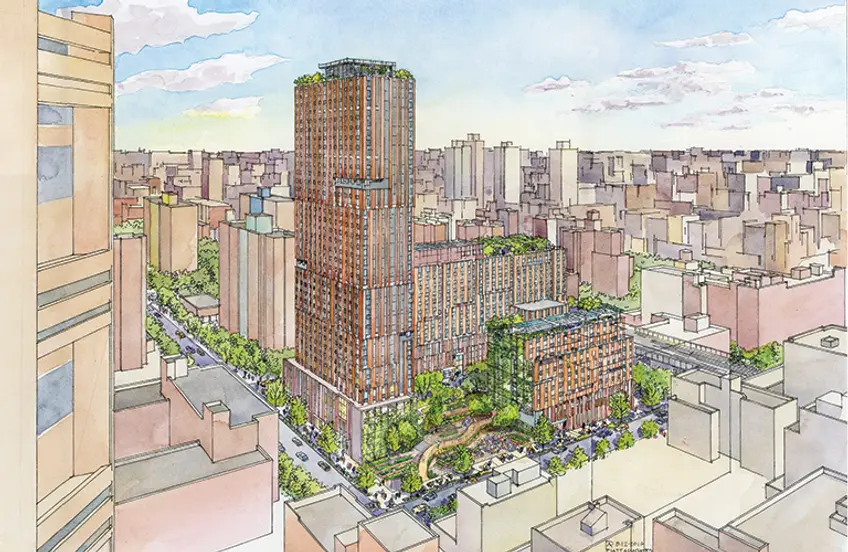 Sendero Verde - 1683-1691 Madison Avenue (Handel Architects)
Sendero Verde - 1683-1691 Madison Avenue (Handel Architects)
One of the most challenging aspects in designing large-scale projects is finding a way to create tailored spaces that are both vibrant and inviting. The forthcoming East Harlem complex, named Sendero Verde, will weave historical and contextual design elements throughout an assortment of programming. The team hopes the outcome will energize its sizeable 751,000-square-foot envelope consisting of apartments, a school, a supermarket and 4 community gardens, all encircling a multi-layered courtyard.
In February, the city selected Jonathan Rose Companies and L+M Development as the developers of the city-owned lots at East 111th Street between Park and Madison avenues. The project was awarded through the city’s SustainNYC program, which seeks to create affordable residences without compromising design quality. Sendero Verde is being designed by the firm of Handel Architects to be Passive House certified and will be the country’s largest according to mayor’s office.
In this article:
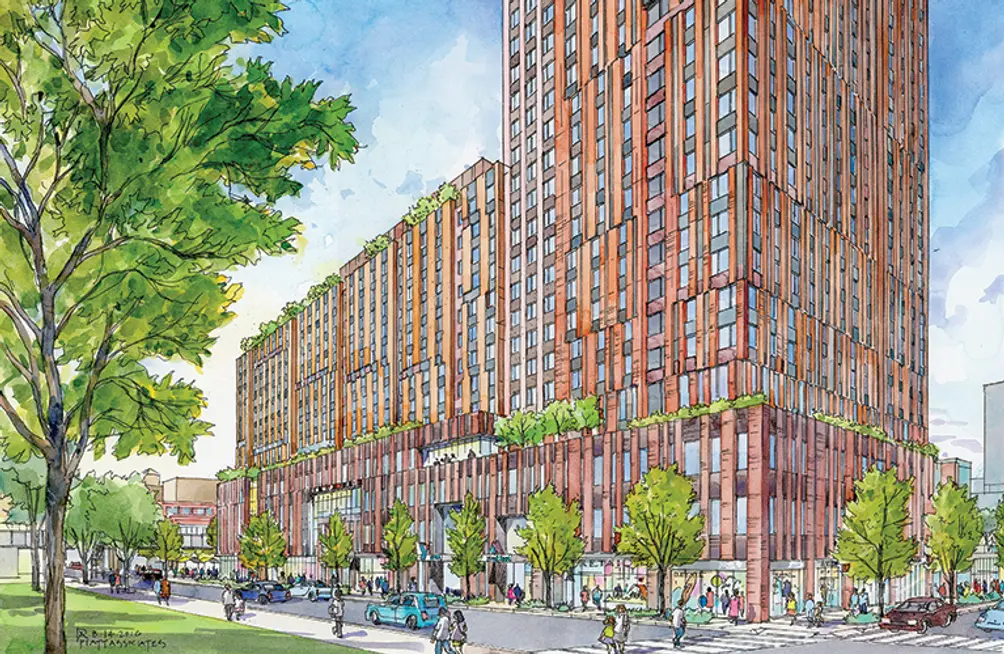 View looking east down 112th Street (Handel Architects)
View looking east down 112th Street (Handel Architects)
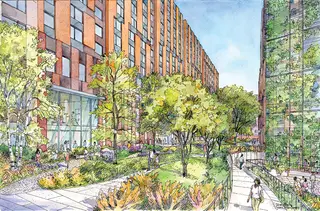 Handel Architects
Handel Architects
Upon being selected, Rose told Politico, “Our goal is to create a complete community… not only housing but services for all the residents,” “We hope this block will be a real model of transformation, not only for the new residents who live there but for the whole neighborhood.” There will be 655 affordable residential units in three buildings ranging from 10 (117’) to 37 (432’) floors. The apartments are anticipated to range between one- and three-bedroom units and be geared towards households earning between 30% and 130% AMI.
There will also be a 142,185 sf of community facility space that includes a YMCA, a Mount Sinai–run health care center, a charter school operated by DREAM, job training, and supportive programming operated by Union Settlement. The 32,000 square feet of commercial space includes a grocery store and a cafe/restaurant.
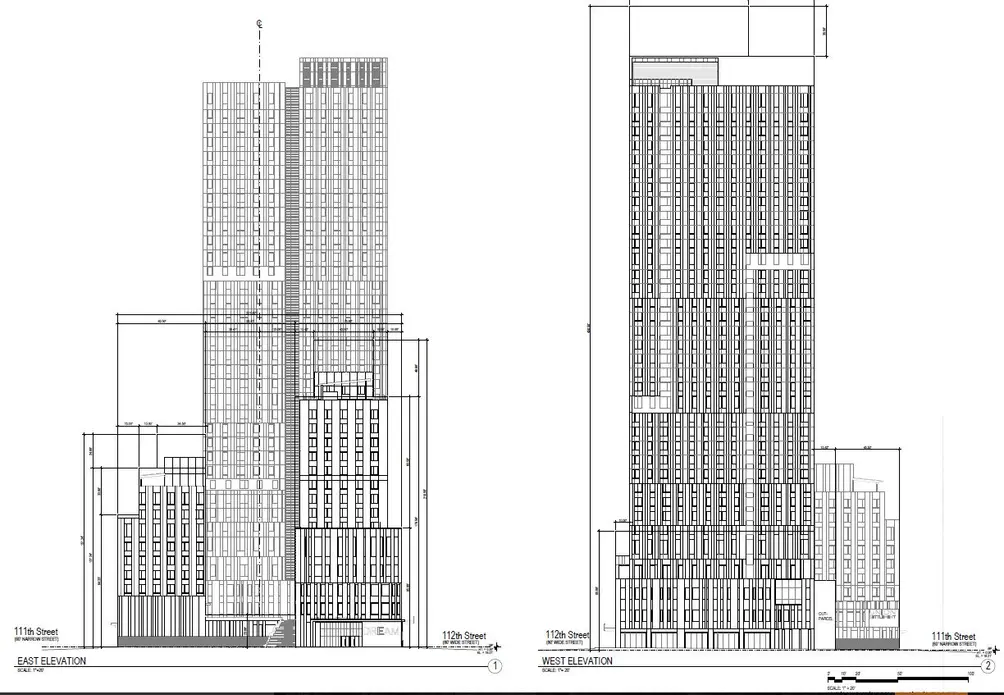 Madison Avenue elevations
Madison Avenue elevations
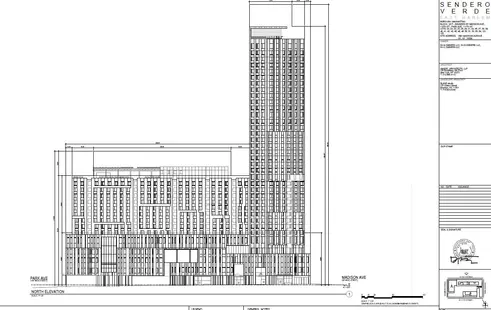 112th Street elevation
112th Street elevation
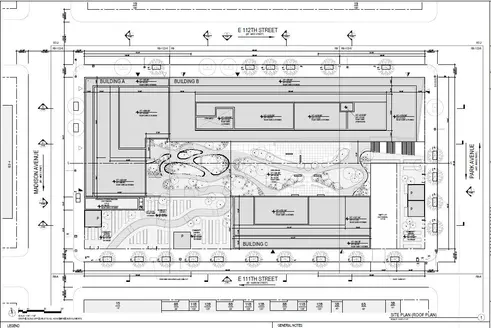 Site Plan
Site Plan
There will be a 264’ x 63’ courtyard that will feature a central meandering landscaped path inspired by a historical trail that once wound through the site. The public courtyard will be accessible through public entrances along Park and Madison avenues, and along East 111th. There will also be access to the plaza through rear entrances of the community facility spaces.
The buildings will be covered in a dynamic façade that will recede and project to help break up the project’s bulk. According to Handel, the articulation of the building’s façade forms a pattern of subtle colors that visually recede and project, causing the eye to move about the architecture.
 Google Earth aerial showing location of Sendero Verde (CItyRealty)
Google Earth aerial showing location of Sendero Verde (CItyRealty)

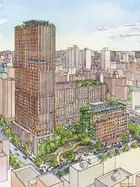
 6sqft delivers the latest on real estate, architecture, and design, straight from New York City.
6sqft delivers the latest on real estate, architecture, and design, straight from New York City.
